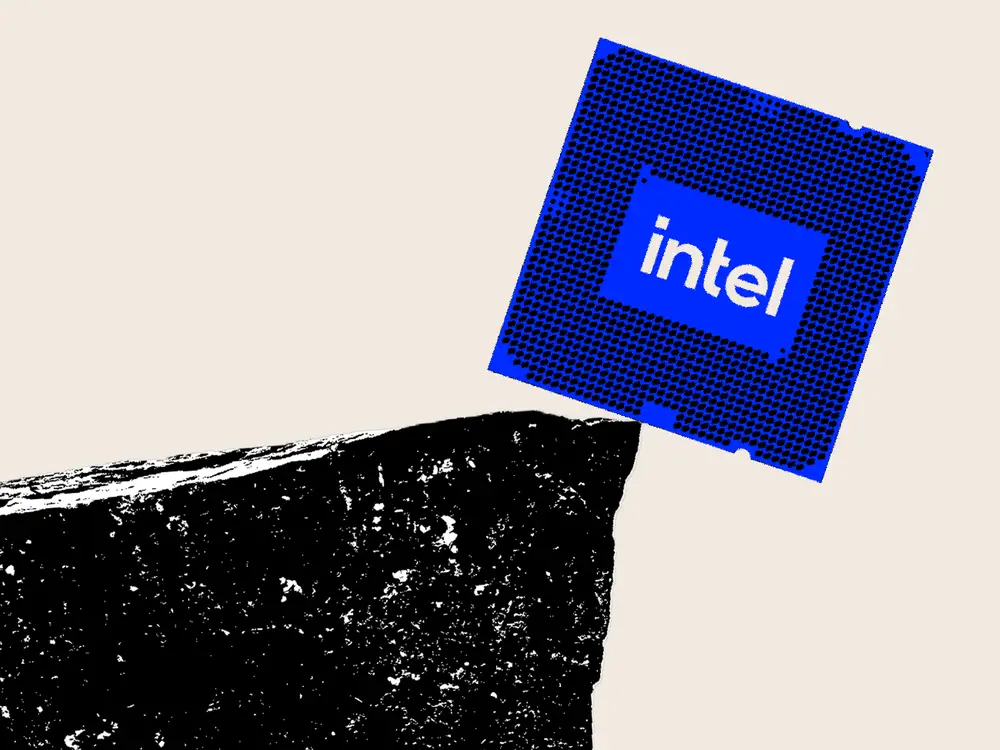Intel is far from becoming the American chipmaking powerhouse the US needs

US government officials are counting on Intel to lead the country’s chip manufacturing renaissance but the company is struggling to meet expectations.
Intel becoming a globally competitive US chip manufacturer is “imperative for the US economy and national security,” said Stephen Ezell, the vice president for global innovation policy at the Information Technology and Innovation Foundation and the director of its Center for Life Sciences Innovation. That’s because the US needs to secure its domestic supply chains of the chips that power items like iPhones, washing machines, and military equipment.
When it comes to bringing advanced chip manufacturing to American shores, the US government is short on options. Jimmy Goodrich, senior advisor for technology analysis to the RAND Corporation, told B-17 that only three companies in the world are manufacturing the most advanced, “leading edge” chips: Intel, Samsung, and TSMC. Intel is the only company in this trio that is based in America — Samsung’s headquarters are in South Korea and TSMC is based in Taiwan.
If Intel falls short, there is “reasonable concern that advanced fabs will not be sustainably available in the US,” said Dylan Patel, the chief analyst at the semiconductor research and consulting firm SemiAnalysis.
While Samsung is building a chip factory in Taylor, Texas the company has postponed taking deliveries of chipmaking equipment because it has yet to land any major customers for the project, Reuters reported in October. TSMC is producing chips for Apple in its Phoenix-based factory and has plans to build two more factories in the city. However, the company has historically preferred to invest in Taiwan, Patel said.
These conditions are why Intel’s recent struggles have raised concerns among some government officials. In August, the company announced it would be parting ways with roughly 15,000 workers through voluntary separation agreements and layoffs. On October 31, the company reported its biggest quarterly loss ever. The third quarter loss was driven by slowing demand for the chips that power personal computers, struggles to gain market share in the booming AI chips sector, and significant investments in its chip manufacturing technology.
To be sure, Intel’s third-quarter revenue beat expectations, and executives said the company is making progress on executing a turnaround plan. In September, Intel announced it will be expanding its collaboration with Amazon Web Services, and the company is optimistic that its new 18A chip —which it’s expected to start producing next year — will help it gain market share in the industry.
However, industry analysts told B-17 that competing with the likes of TSMC and Nvidia will be an uphill battle — in part due to a series of strategic missteps Intel has made over the past two decades.
Another potential wild card is whether a Trump administration — specifically its proposed tariff policies — would aid or hinder Intel’s turnaround efforts. President-elect Donald Trump has expressed support for boosting domestic chip manufacturing but has criticized the CHIPS Act, a key Biden administration initiative that companies like Intel are counting on for funding.
An Intel spokesperson told B-17 that the company’s recent quarterly earnings demonstrate the “tangible progress” the company is making on its turnaround strategy. They added that the goal of making the US a leader in semiconductor manufacturing was a priority in the first Trump administration and continues to have bipartisan support.
“We look forward to working with President-elect Trump and his administration to advance America’s technology and manufacturing leadership,” they said.
Intel’s problems have ramifications outside the company
The stakes aren’t just high for Intel employees and executives: Intel is the largest recipient of funding from the CHIPS Act, which included $52.7 billion in tax breaks and subsidies intended to bolster the US semiconductor industry. The Biden administration bet that boosting domestic chip manufacturing would make the US less reliant on chips sourced abroad from TSMC, which produces, by some estimates, about 90% of the world’s advanced chips. Additionally, fears of a Chinese invasion of Taiwan complicate the US’s dependence on TSMC.
Intel was awarded $8.5 billion in grants and $11 billion in loans through the CHIPS Act, which it plans to use to supplement the over $100 billion it’s committed to expanding its operations in Arizona, Ohio, New Mexico, and Oregon. Like most companies, Intel hasn’t received any of these funds yet. Recipients are required to meet certain benchmarks — which can include building a chip fab or securing customers — before the funding is doled out and Intel hasn’t met those milestones yet.
In response to the company’s struggles, government officials have discussed whether it should receive additional financial support or merge its chip design business with a competitor. Last month, The New York Times reported that Gina Raimondo, the US secretary of commerce, urged chief executives from Google, Microsoft, Apple, Nvidia, and other firms to buy chips from Intel.
“Our Q3 results underscore the solid progress we are making against the plan we outlined last quarter to reduce costs, simplify our portfolio, and improve organizational efficiency,” CEO Pat Gelsinger said on the company’s earnings call on October 31.






